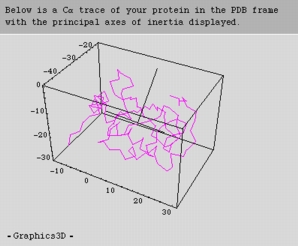Software for analysis of NMR relaxation data

Listed below are some Mathematica notebooks for the analysis of relaxation data from proteins. The notebooks were originally written using Mathematica version 6.
If you use the notebooks, please cite: Spyracopoulos, L., J. Biomol. NMR (2006) 36, 215-224.
- Inertia Tensor: This notebook will read a pdb file and calculate the components of the inertia tensor. A trace through the Calpha atoms of the protein is shown, along with the principal components of the inertia tensor; this trace can be rotated in real time.
- Diffusion Tensor: This noteboook will read a pdb file and backbone amide 15N-T1,-T2, and NOE data collected at a single magnetic field strength and calculate the components of the axially symmetric diffusion tensor, and estimate Rex terms. The notebook will also calculate an isotropic overall correlation time (pdb coordinates are not necessary for this calculation.
- Relaxation Decay: This notebook will read a sparky peak intensity file generated from the rh command and fit the peak heights to a two-parameter exponential decay to extract T1 or T2.
- Lipari-Szabo Analysis: This noteboook will read backbone amide 15N-T1,-T2, and NOE data collected at a single magnetic field strength and perform a "model free" analysis with model selection via Akaike's Information Criteria. Available in version 6. Updated Model Free notebook with many new features and capacity to analyze relaxation data at multiple fields is available upon request, see below for further details and contact information.
- Spectral Density Analysis: This noteboook will read backbone amide 15N-T1,-T2, and NOE data collected at a single magnetic field strength and perform a quasi-spectral density analysis. Errors for the spectral density values are estimated using Monte Carlo analysis.
- F19 Model Free: This notebook will read 19F-R2 relaxation rate constants at two magnetic field strengths and perform a two-parameter model free analysis. The analysis is meant for cysteine residues modified with the bromotrifluoroacetone reagent. If you use this notebook, please cite: Suad Rashid, Brian L. Lee, Benjamin Wajda, and Leo Spyracopoulos, J. Phys Chem B. (2019), doi: 10.1021/acs.jcpb.9b01741
By downloading this software, I agree to accept the terms of the software license agreement.
Click Here to Access the Software Download Page
Software Updates
- Inertia Tensor: Sept. 6/2007, Mathematica version 6 notebook released.
- Diffusion Tensor: Sept. 18/2007, Mathematica version 6 notebook released.
- Relaxation Decay: Sept. 17/2007, Mathematica version 6 notebook released.
- Lipari Szabo Analysis: Sept. 6/2007, Mathematica version 6 notebook released.
- Spectral Density Analysis: Sept. 6/2007, Mathematica version 6 notebook released.
- MODEL FREE NOTEBOOK: April 14/2015, Mathematica version 10.1.0.0 notebook:
This notebook will allow for the model free analysis of 15N-T1,-T2, and NOE acquired at up to three field strengths. Some features include a graphical user interface; isotropic, axially symmetric and fully asymmetric rotational diffusion can be accounted for; errors are calculated from Monte Carlo parameter estimation; plots of the objective functions; histograms of Monte Carlo parameter distributions can be produced as requested.
If you would like to try this notebook please send an email. The notebook has not been extensively tested.